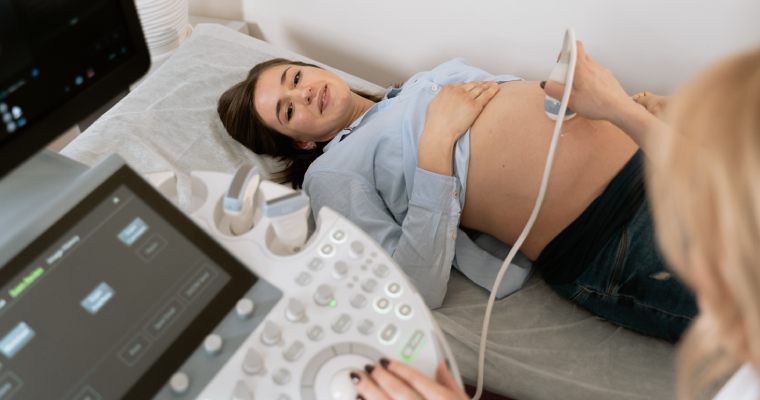5 Signs of Early Labour
- Labour
-
- UPDATED MAR 2024

by Tasha Mayberry
430 shares
If you’ve ever given birth, you will know that waiting for the arrival of your little one is one of the most daunting experiences of motherhood. Contrary to what we see in the movies, labour is not always as easy as your water breaking and you huffing, puffing, and pushing until the baby comes out.
In reality, there are three stages of labour from your cervix softening, through to the delivery or your placenta immediately after childbirth. The first of these stages is the early stage, otherwise known as the latent phase or early labour. In this article, run through the signs of early labour and when you should see your midwife or doctor.
What is Early Labour?
The latent phase, or early labour, is the stage of your delivery process in which your cervix starts softening, thinning, and gradually opening. To put it simply, this is the part when your body begins truly preparing for your baby to be born.Early labour can last from hours through to days, and most of the time provided that all is well, expectant mums are advised to stay home until they reach established labour.

How Do I Know if I Am Already in Early Labour?
Every woman is different. So just like the early stages of your pregnancy, your latent phase may be unique to other women. As a guide, however, we list below five of the most common signs and symptoms often noted by mums-to-be during their early labour stages.
1. You Might Experience a "show".
During pregnancy, your cervix, or the bottom-most part of your womb, is sealed off by a plug of mucus. This protects your entire uterus and your unborn child from becoming infected by
external organisms.
When early labor kicks in, this plug detaches from the cervix, causing you to see a ‘show’, or a pinkish or reddish blob of mucus discharge from your vagina. Seeing a show is an imminent sign
that you will go into full-on labor soon, but again, this can happen anywhere between hours to days.
Although quite common, you should know that some women do not experience a show at all.
When to call your GP or midwife: If you are having a LOT of bloody discharge, ring your healthcare provider immediately, as this may be a sign of something serious.
2. Increased Discharge
It is common for women to experience an increase in their vaginal discharge as they near come nearer to their delivery. This discharge is usually made up of old cells from the walls lining your
cervix as well as secretions from the cervix itself.
Increased discharge is often confused by pregnant women as urine. The difference is that vaginal discharge during pregnancy has a white or off-white colour compared to the slightly transparent or yellow-tinged colour of your pee. This discharge also shouldn’t be confused with a show. As mentioned early, the show has a pinkish to reddish colour to it.
When to call your GP or midwife: Check with your midwife or doctor if you are experiencing greenish or thick yellowish (different from the consistency of urine) discharge. Contact them as
well if your discharge has a foul odour to it. Both of these may indicate an infection and is best treated immediately.
3. Your "waters" Break.
This is the typical first labour sign we often see on TV. However, this is far from real life. In fact, gynaecologists report that only 15% of women experience waters breaking as their first sign of
labour.
When your water breaks, you may feel a sudden gush or a trickle of watery fluid coming out of your vagina. The fluid comes from your amniotic sac, the part of your body that provides
cushioning to your baby.
When to call your GP or midwife: Get in touch with your midwife immediately if you feel that your water broke. Do the same even if you are unsure if the discharge was actually your water
breaking.

4. Pain and Discomfort.
As your baby starts to descend lower into your pelvis, it puts pressure on your pelvis and tailbone. This causes you to experience lower back pains or increased pelvic pressure leading to
discomfort – or a combination of both. You may also feel abdominal pains, similar to the discomfort felt when you’re experiencing menstrual cramps.
5. Painful Contractions
The quality of discomfort from early labour contractions varies between women. Some report distressingly painful contractions, while some find it incredibly mild, it doesn’t bother them one bit.
Early labour contractions are usually irregular and feel similar to that of menstrual cramps. Real contractions, on the other hand, adopt a regular pattern and often increases in intensity as the labour progresses further.
Tips to Help You Get Through Early Labour:
Because no one can tell for sure how long your latent phase of labour can last, try to make the signs and symptoms manageable, and yourself comfortable. Here are a few suggestions:

- Ensure you are around people who can support you and help you relax at the same time.
- Try having warm and relaxing baths.
- Try to walk or move around as much as you can tolerate it.
- Continue eating healthy and drinking plenty of fluids.
- If the pain is too much for you to handle, and your healthcare provider approves of it, you can also use TENS machines. These are devices that use electrical stimulation to provide pain relief. Traditional TENS machines will do, but there are also someTENS machines designed exclusively for use during pregnancy.
- Distract yourself by reading books, watching the telly, or you can even use the time to double check that you have everything in your birth and newborn bags.
- Practice relaxing breathing techniques as during contractions. Your midwife would have run you through this in one of your prenatal checkups.

Remember, early labour is not the same as established labour. However, it is a sign that elivery is impending. If you have any concerns or if you are feeling uneasy at any point during your early labour phase, don’t hesitate to contact your midwife or doctor.